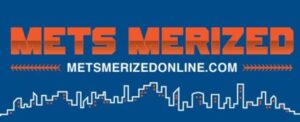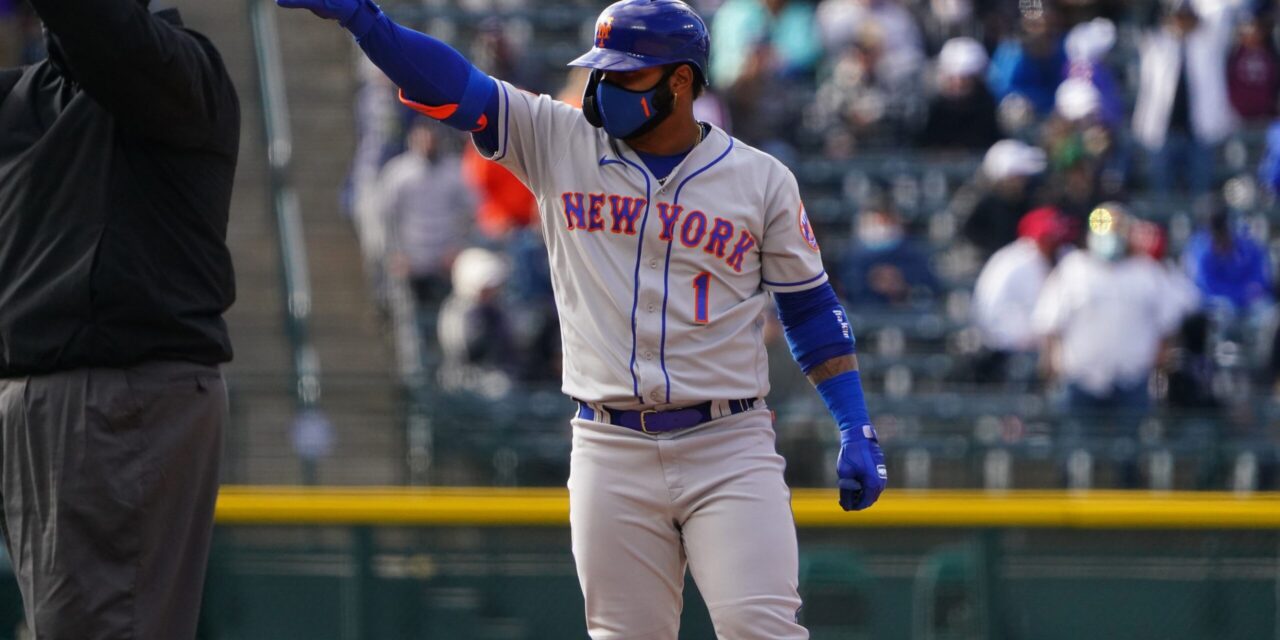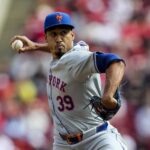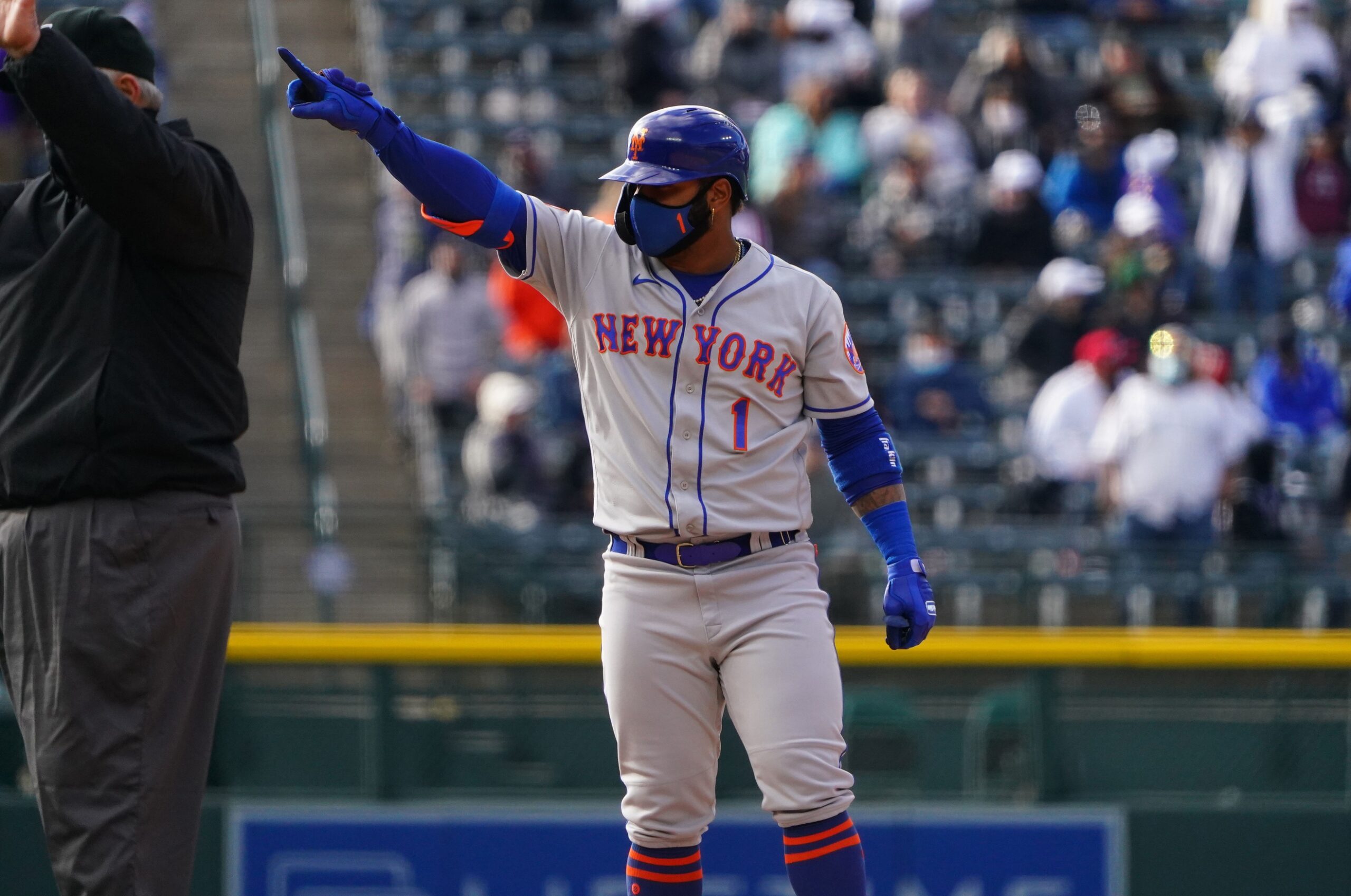
Mandatory Credit: Ron Chenoy-USA TODAY Sports
After lacking reliable depth on the bench last season, the New York Mets went out and added several proven veterans to help correct that issue this season, and so far, those acquisitions have made a significant impact through the first month and a half of the schedule.
Needing to locate a versatile backup infielder, president Sandy Alderson and his staff ultimately settled on Jonathan Villar, signing him to a one-year, $3.55 million contract. Despite coming off a disappointing performance that was split between the Miami Marlins and the Toronto Blue Jays, where he posted a career-worst 66 wRC+ score and a -0.3 fWAR rating, the Mets were hopeful the 30-year-old could bounce back with a change of scenery.
While Villar was originally expected to fill in all around the infield in 2021, his role has drastically shifted since the calendar turned to May and he’s witnessed a significant increase in playing time, as the versatile defender has needed to serve as the everyday third baseman due to multiple key injuries.
With infielders J.D. Davis (sprained left finger) and Luis Guillorme (strained oblique) both on the 10-day injured list, this team’s depth has certainly been tested early on and it’s forced manager Luis Rojas to rely on someone who he probably thought would mainly serve as a bench option this season. But luckily for the Mets, the former Marlin has been a major surprise up to this point and has excelled at his new job as a full-time player at the hot corner.
Even though expectations were set fairly low at the start of May, it hasn’t taken Villar very long to catch fire at the plate, which has resulted in four home runs, nine RBIs, a .211 ISO, a .329 wOBA, a 13.6% walk rate, a 22.7% strikeout rate, a 36.6% FB rate, a 113 wRC+ score and a respectable slashing line of .228/.333/.439/.772 over his 66 plate appearances since May 2.
Thanks to this recent offensive outburst, the Dominican native is proving he’s still capable of serving as a productive hitter at the bottom of the order, allowing him to largely improve his overall season totals. In addition, the speedy infielder is also beginning to demonstrate that last season’s performance may have been somewhat of an outlier, potentially caused by the COVID-19 pandemic, and wasn’t the start of his career taking a turn for the worse.
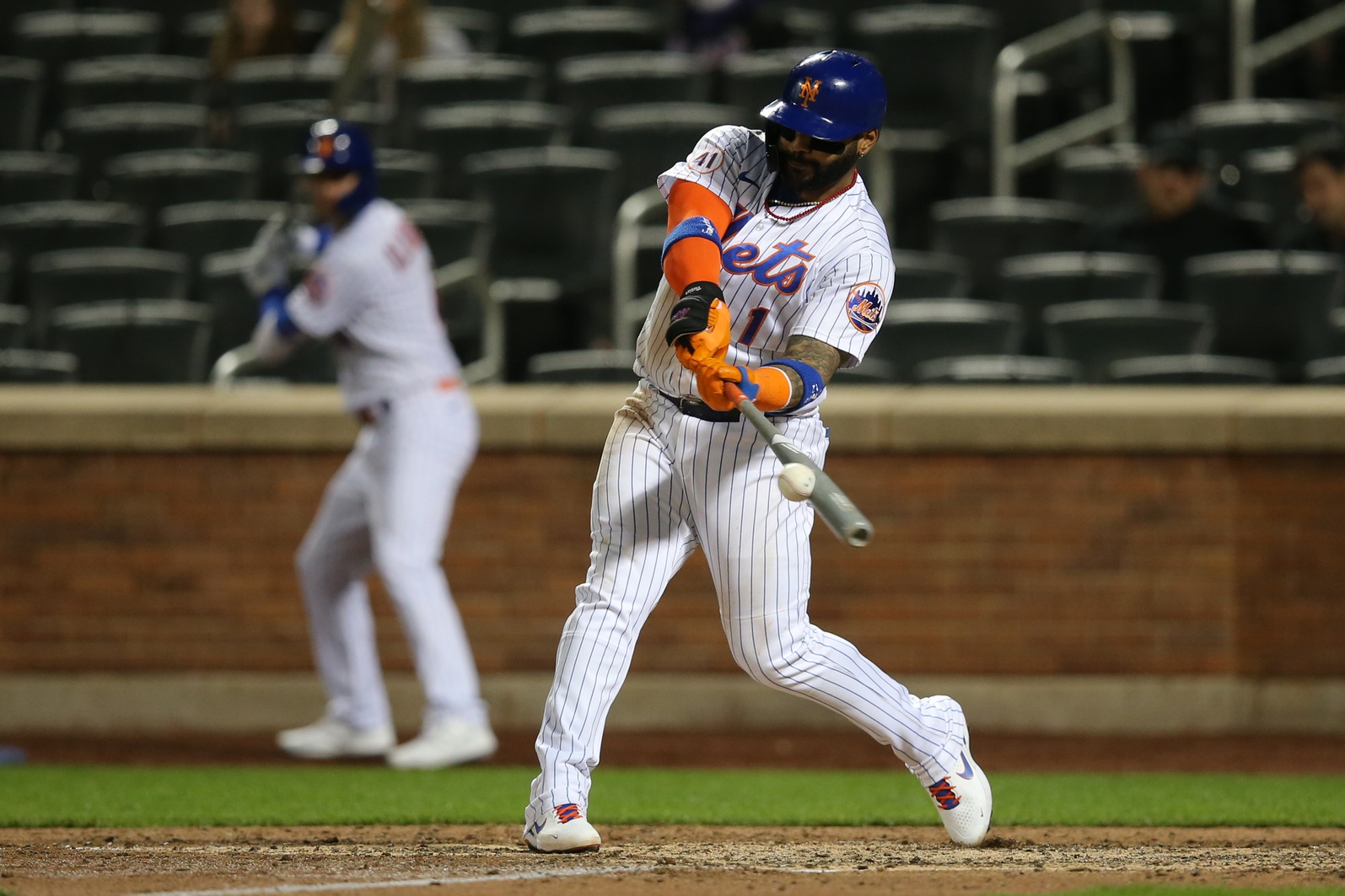
Credit: Brad Penner-USA TODAY Sports
Over his 104 plate appearances in 2021, Villar has produced three doubles, one triple, four home runs, 12 RBIs, a .183 ISO, a .308 wOBA, a. 306 xwOBA, a 9.6% walk rate, a 26.9% strikeout rate, a 33.3% FB rate, a 99 wRC+ score, a 1.5 BsR, a 0.4 fWAR rating and a slashing line of .226/.308/.409/.716.
In comparison, the former international free agent earned 207 plate appearances in 2020, recording five doubles, two home runs, 15 RBIs, a .059 ISO, a .266 wOBA, a .253 xwOBA, a 9.2% walk rate, a 26.1% walk rate, a 21.2% FB rate, a 66 wRC+ score, a 0.7 BsR, a -0.3 fWAR rating and a slashing line of .232/.301/.292/.593.
While Villar has struggled to hit for contact this season, resulting in his .279 BABIP, he’s been able to make an impact with his power and his impressive speed on the basepaths. Though he’s only generated a 26.2% hard-hit rate and an 85.9 mph average exit velocity, the switch-hitter is barreling up more balls and hitting them in the air much more frequently than he did throughout the shortened campaign.
Making the majority of these adjustments against fastballs, the former Blue Jay has increased his average launch angle from 9 degrees in 2020 up to 12 degrees this season, helping him improve his fly ball rate by 13.5%.

Source: BaseballSavant.com
Digging deeper, Villar owned a 6-degree average launch angle and a 23.1% FB rate against heaters during the opening month of the season. But so far in May, he’s producing a 15-degree average launch angle and a 30.8% FB rate, which is a pretty impressive improvement in such a short period of time.
As for the type of contact he’s been making, “Villi” struggled mightily to square up fastballs last season, creating just a 2.7% barrel rate against them. Putting those woes behind him this season, the adjustments he’s made to his swing has helped the veteran hitter induce much better contact, which has resulted in a 10.3% barrel rate.

Source: BaseballSavant.com
Following these mechanical adjustments, Villar has dramatically improved his overall metrics against fastballs ever since taking over the starting third base spot. As a result, he’s witnessed an increase in contact, power and also hasn’t been striking out nearly as much compared to the first month of the schedule.
In April, the former top prospect posted a .217 AVG, .180 xAVG, .348 SLG, .307 xSLG, .240 wOBA, .208 xwOBA, 43.5% strikeout rate, 32.3% chase rate and a 31.8% whiff rate over his 23 plate appearances against heaters.
But over his 42 plate appearances against them this month, he’s recorded a .222 AVG, .224 xAVG, .389 SLG, .458 xSLG, .323 wOBA, .344 xwOBA, 23.8% strikeout rate, 25.0% chase rate and a 25.7% whiff rate.
If Villar can maintain his current fly ball and barrel rates against fastballs, along with continuing to improve his plate discipline, there’s a very good chance he could sustain this type of production through the rest of the season. Considering the offensive-first infielder is only providing average defense at third base, as he owns a -1 OAA and a -2 DRS through 163 2/3 innings, staying on this current offensive pace could help him earn regular at-bats moving forward.
With Davis nearing a return to the majors, which could come as soon as this weekend, the 28-year-old is expected to regain his starting job at the hot corner when he’s activated off the IL. In turn, this move will undoubtedly eat into Villar’s playing time, but with teammate Jeff McNeil still sidelined due to a strained hamstring, the versatile infielder could slide over to second base – a position he’s much more comfortable at.
Whenever the Mets are fully healthy, Villar is expected to return to his regular role on the bench, limiting him to just pinch-hitting duties. Having said that, this encouraging stretch at the plate should provide Rojas and his staff some confidence if they need to call his name during key moments of this club’s hunt for a playoff spot.
